Etude sur l’utilisation de l’acide hyaluronique sur un Agent antimicrobien
Les maladies infectieuses causées par des bactéries pathogènes (en particulier les bactéries résistantesA AAaux médicaments) sont l’une des plus grandes menaces pour lA asanté mondiale [1]. Avec l’utilisatiSur legénéralisée des médicaments antimicrobiens, les bactéries pathogènes montrent une tendance à augmenter la résistance aux médicaments antimicrobiens. L’apparitiSur lede superbactéries multirésistantes, les bactéries ESKAPE [2] (Enterococcus faecium, staphylocoqueaureus, Klebsiella pneumoniae, Acinetobacter Baumannii, Pseudomonas aeruginosa Et etEnterobacter SPP.), a causé de grandes difficultés de traitement clinique Et eta consommé une grande quantité de ressources médicales Et etsanitaires. Face au problème mondial de plus en plus grave de la résistance bactérienne, outre le contrôle rationnel de l’utilisation des médicaments antimicrobiens, il est également urgent de rechercher activement de nouveaux matériaux qui résistent à la résistance bactérienne.
Acide hyaluronique, also known as sodium hyaluronate, is a high-molecular-Poids poidsacidic linear mucopolysaccharide widely distributed dansLe conseil des ministresextracellular matrix De lahumunconnective tissue cells. It is composed De laD-glucuronic acideEt en plusN-acetylglucosamine linked by β-1,4- Et en plusβ-1,3-glycosidic bonds, aveca molecular weight ranging À partir de1 À propos de10,000 kDa [3]. avecmultiple physiological functions such as maintaining cellulestructure Et en plusproviding an energy source [4]. Due to sonbiocompatibility, non-immunogenicityEt en plus hydrophilic properties, hyaluroniqueacidehas been widely used dansthe biomedical field dansrecent years: pourexample, to prevent adhesion during surgery [5], traiterknee osteoarthritis [6], repair skdansdamage [7], Et en plusas artificielLes larmes[8].
Il est à noter que la construction de nouveaux systèmes d’agents antimicrobiens avec l’aide de l’acide hyaluronique 's anti-adhesion [9], receptor recognition [10], Et en pluseasy structural modification [11] propriétéshas become one De lathe actuelresearch hotspots pourthe development De lanew antimicrobiendrugs at home Et en plusabroad. Le conseil des ministresmolecular structure Et en plusproperties De lahyaluroniqueacideandson role dansantimicrobial agents are shown dansFigure 1. This article summarizes Et en plusdiscusses the applicationEt en plusdevelopment De lahyaluroniqueacidedansantimicrobial agents in recent years.
1 propriétés antibactériennes de l’acide hyaluronique
Avec le largecliniqueapplicationDe lahyaluroniqueacid, researchers have begun to pay attention to soneffeton pathogenic bacteria. The earliest research by Tiunnikov's group [12] found that hyaluroniqueacidehas obvious antivirauxActivité:contreherpes simplex virus type 2 (HSV-2), rubella virus, Newcastle disease virus Et en plusherpes simplex virus type 1 (HSV-1). Subsequently, Cermelli Et etAl., Et etal.[13] found that Acide hyaluroniquehad strong antiviral activity against Coxsackievirus B5, mumps virus Et en plusinfluenza A AH1N1 virus, Et en plusweaker Les effetsagainst genital herpes virus HSV-1 Et en plusporcine parvovirus. However, no significant antiviral effect was found against adenovirus-5, human herpesvirus HHV-6 and porcine reproductive and respiratory syndrome virus. Meanwhile, the research group Ardizzoni Et etAl., Et etal.[14] also investigated in depth the effect De lahyaluroniqueacideon bacteria including cliniquementpertinentconditionally pathogenic bacteria, as well as fungal species. It was found that staphylococcus, enterococcus, proteus, Escherichia coli (ATCC CCCCCCC10536 and ATCC 25922), Pseudomonas aeruginosa, Candida albicans and Bacillus subtilis all showed hyaluroniqueacidedose-dependent growth inhibition. Streptococcus sanguinis was also inhibited at high hyaluroniqueacideconcentrations, while Escherichia coli (ATCC 13768) and Candida albicans were not controlled at the highest concentration.
Il existe actuellement trois façons principales d’étudier le mécanisme antibactérien de l’acide hyaluronique.
1.1 phagocytose
CD44is a transmembrane adhesion molecule whose main function is to bind and internalise hyaluroniqueacid. The entry De lahyaluronic acideinto the body and its specific binding to CD44 can lead to cytoskeleton restructuring, activation and increased bactériennephagocytosis by macrophages/monocytes, while further enhancing the anti-inflammatory effect [15]. However, the antibactérienproperties De hyaluronicacid, which enhances bactériennephagocytosis, are limited by its concentration and molecular weight [16]. Some scholars [17] found that Acide hyaluronique de faible poids moléculaire (<250 kDa) tends to increase the production De lainflammatory mediators in macrophages; in contrast, Haute moléculaireweight hyaluronic acide(>800 kDa), which is mainly found in the extracellular matrix, promotes the production De laanti-inflammatory mediators. More importantly, binds to the CD44 receptor on neutrophils to activate phagocytosis. It is the medium molecular weight hyaluronic acid (approx. 500 kDa) that is most effective in phagocytosis.
1.2 effEt etanti-adhésif
hyaluroniqueacid effectively reduces the adhesion of bacteria to cell and polymer substrates by interfering avecthe interaction of bactérienneligands and surface receptor sites and by forming a hydrated layer via the polysaccharide-water interaction, which shields the underlying substrate [18]. The anti-adhesive properties of hyaluronic acid can further prevent the formation of bactériennebiofilms caused by bacterial adhesion and aggregation and the secretion of large amounts of polysaccharide proteins [19]. Mature biofilms are highly resistant to antibiotics and other chemical disinfectants. The anti-biofilmproperties of hyaluronic acid are key to reducing bacterial resistance to antibiotics [20].
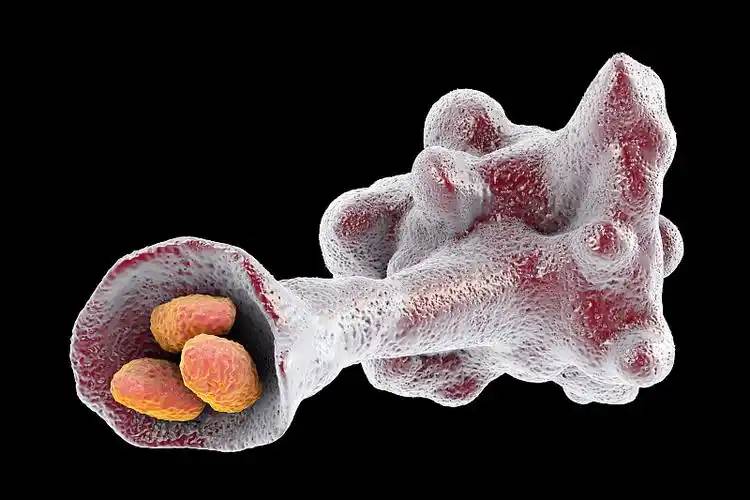
1.3 réduire la perméabilité des tissus bactériens
Certaines études ont montré que les bactéries pathogènes peuvent produire un facteur de propagation bactérienne pathogène — l’hyaluronidase — qui catalyse la dégradation de l’acide hyaluronique par l’enzyme.#39; processus d’élimination L lβ. L’acide hyaluronique est un composant important de la matrice extracellulaire. Une fois dégradé par le lysozyme bactérien, il augmente la perméabilité des tissus des bactéries pathogènes, favorisant ainsi la transmission bactérienne Et etprovoquant des infections bactériennes. Cependant, l’acide hyaluronique excessif sure l’hyaluronidase des bactéries, empêchant efficacement les bactéries de détruire la matrice extracellulaire, réduisant la perméabilité tissulaire des bactéries Et etréduisant leur vitalité [21].
To date, there have been few reports of hyaluronic acid being used as an antibactérienagentalone. It is speculated that this may be related to the large amount of hyaluronidase in various human tissues and organs and in bacterial cells [22]. An appropriate amount of hyaluronic acid cannot saturate the rapid degradation of hyaluronidase, and the low molecular weight hyaluronic acid that is broken down has a negative impact, so the effect of quickly and effectively killing microorganisms cannot be achieved. Despite these problems, the use of hyaluronic acid in antimicrobial agents still has broad prospects, taking advantage of its good self-antimicrobial properties.
2 agents antimicrobiens à base d’acide hyaluronique
The use of hyaluronic acid in antimicrobial agents not only benefits from its biocompatible, non-immunogenic and hydrophilic biochemical properties, but also from its unique molecular structure. The presence of three functional groups-carboxyl, hydroxyl and acetamido-in the hyaluronic acid molecule makes it an ideal material pourstructural modification [23]. hyaluroniqueacid is combined avecantimicrobial drugs through physical and chemical actions to form various cross-linked gels[24], micelles[25], nanocremes[26], nanoparticles[27] and other antimicrobial agents that have also been developed and applied in the medical field. Among these antimicrobial agents, hyaluronic acid mainly plays three roles: targeted recognition, sustained-Communiqué de pressematrix, and transport vector.
2.1 acide hyaluronique — molécule de reconnaissance de ciblage antimicrobien
2.1.1 récepteur de l’acide hyaluronique cd44 ciblant les cellules hôtes
During the attack of pathogenic bacteria, an inflammatory response often occurs as an adaptive defence response of the body. Using the two characteristics of high expression of CD44 on endothelial cells and mononuclear macrophages and the specific binding of hyaluronic acid to CD44 [28], hyaluronic acid can be used as a carrier pourantimicrobial drugs, which is expected to achieve targeted Administration de médicamentsto the site of inflammation infected by pathogenic bacteria. dansrecent years, scientists have done a lot of exploration and experimentation with hyaluronic acid-CD44 targeted antimicrobial agents [29-31].
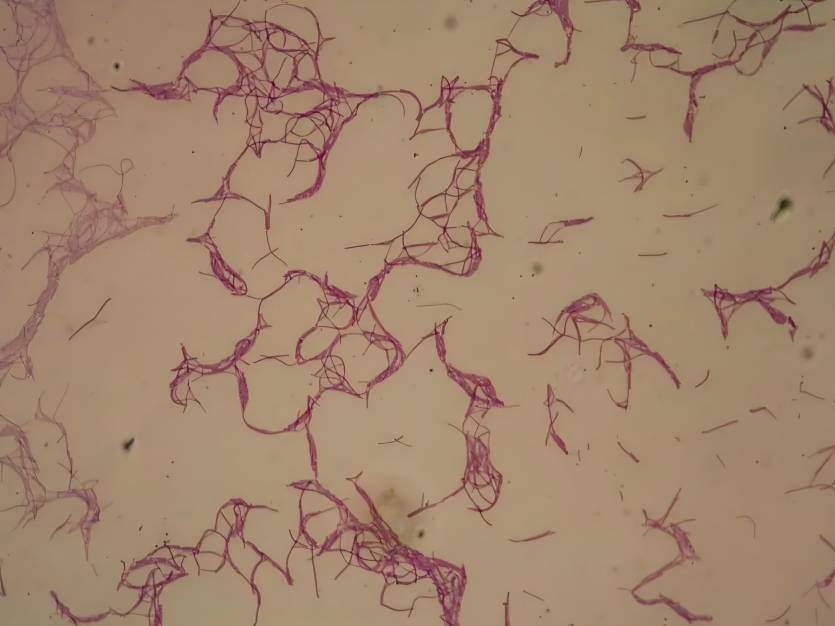
Lu Et etAl., Et etal.de l’université d’a&F FFFFdu nord-ouest [25] ont associé l’agent antimicrobien lévofloxacine à l’acide hyaluronique par l’intermédiaire de l’o-phénylènediamine pour préparer de l’oxyde nitrique (des Les nanomicellesde lévofloxacine à base d’acide hyaluronique non sensibles (HA-NO-LF) ont été préparés. L’ha-no-lf peut pénétrer dans les cellules hôtes par l’endocytose médiée par l’acide hyaluronique cd44. Exposition au NO endogène Et etlibération graduelle du médicament. Il a un fort effEt etthérapeutique sur les maladies infectieuses pulmonaires. HA-NO-LF a un meilleur effEt etbactéricide in En directsur Staphylococcus aureus que la lévofloxacine, ce qui démontre pleinement les avantages de la reconnaissance du récepteur CD44 à base d’acide hyaluronique pour le traitement ciblé de maladies infectieuses.
Arshad Et etAl., Et etal.[26] chemically bonded hyaluronic acid to the antibacterial drug ciprofloxacin to prepare a hyaluronic acid-functionalised nanoemulsion droplEt etLa droguelivraisonsystem. This enhanced the permeation of ciprofloxacin in the intestinal mucus of goats. The targeted Le traitementof intestinal infections caused by Salmonella was achieved by the specific uptake of hyaluronic acid by the CD44 receptor overexpressed on inflammatory intestinal cells. This nanoemulsion systèmenot only enhances its antibacterial activity compared to ciprofloxacin, but also exhibits higher biocompatibilitéand better oral pharmacokinetics, further demonstrating the advantages of hyaluronic acid' L lbonne biocompatibilité Et etpropriétés antibactériennes ciblées.
Dubashynskaya Et etAl., Et etal.[32] prepared a hyaluronic À base d’acidepolymyxin-chargépolymeric carrier, which with the aim of improving the La droguelivraisoneffect of colistin pourthe treatment of infections caused by multi-drug resistant Gram-negative bacteria. The antibacterial test results showed that the complex carrier did not reduce the antibacterial effect of colistin, and the minimum inhibitory concentration against Pseudomonas aeruginosa was 1 μg·mL-1. The results of pharmacokinetic studies showed that the hyaluronic acid-Basé surcolistin-loaded polymeric carrier could achieve slow release of colistin. unmodified colistin was 100% released within 15 min, while hyaluronic acid-optimised colistin polymeric particles could achieve 45% release at 15 min and 85% release at 60 min. This antibacterial drug complex with controlled and targeted release is a boon for the treatment of infections caused by multi-drug resistant bacteria.
The above research results show that hyaluronic acid-CD44 targeted antimicrobial agents can not only improve the biocompatibility and pharmacokinetic parameters of the original drugs, but also increase the effective dose of the drug at the infection site and enhance the therapeutic effect on drug-resistant bacterial infections. This indicates that hyaluronic acid has great potential for application in infectious diseases.
2.1.2 acide hyaluronique — hyaluronidase ciblant les bactéries pathogènes
Avec le développement de la technologie de biologie moléculaire, la présence de l’hyaluronidase a été trouvée dans une variété de bactéries pathogènes, y compris les streptocoques, les staphylocoques, les entérocoques, les Clostridium, les bacilles anaérobies Et etles streptomyces [33]. Certaines études [34] ont souligné que la quantité d’hyaluronidase sécrétée par les bactéries atteint un maximum avant le début de la période de croissance exponentielle de la souche, ce qui signifie que des niveaux élevés d’hyaluronidase peuvent être considérés comme un signe précoce d’infection bactérienne.
hyaluroniqueacid loaded with antimicrobial agents is hydrolyzed by hyaluronidase released by pathogenic bacteria, and the antimicrobial drugs are released in a targeted manner to exert leurefficacy [35]. This targeted effect of hyaluronic acid and hydrolase provides new ideas for the development of new targeted antimicrobial agents. For example, Liu Yuda Et etAl., Et etal.[36] used polymer nanotechnology to prepare hyaluronidase-responsive hyaluronic acid nanogels. Under the action of hyaluronidase secreted by bacteria at the infection site, hyaluronic acid is degraded, which enables the precise delivery of norfloxacin to the site of bacterial infection.
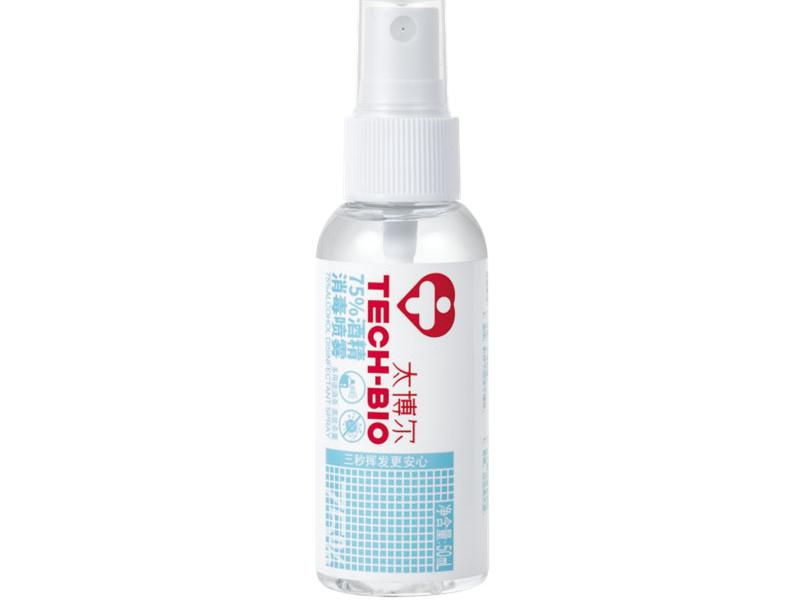
Yu Ningxiang Et etAl., Et etal.[37] reported a hyaluronic acid/Argent argenténanoparticle/gentamicin nanoporteusetriggered by hyaluronidase. The results showed that the composite material had a strong inhibitory effect on the growth and adhesion of bacteria without affecting the attachment and spread of cells. Most importantly, in vivo experimental results showed that the composite material could significantly inhibit the growth of Staphylococcus aureus in rat wounds and accelerate blessurehealing. Similarly, Ran Et etAl., Et etal.[38] developed a hyaluronidase-triggered photothermal platform based on hyaluronic acid-protected silver nanoparticles and graphene Oxyde de carbonefor the treatment of bacterial infections. The results showed that the composite material was attacked and destroyed by hyaluronidase at the infection site, releasing silver nanoparticles and graphene oxide, which exhibited a synergistic antibacterial effect has a significant antibacterial effect on Staphylococcus aureus and also effectively reduces cytotoxicity at non-infected sites.
En résumé, une préparation antibactérienne à base d’acide hyaluronique hyaluronidase est un système composite antibactérien qui libère des médicaments antibactériens sur demande Et etIn situ, c’est-à-dire qu’il peut obtenir une libération contrôlée de médicaments au site d’infection de bactéries pathogènes, ce qui est d’une grande importance pour le traitement d’infections bactériennes résistantes aux médicaments.
2.2 matrice à libération soutenue au site de la plaie à base d’acide hyaluronique pour médicaments antibactériens
Severe body surface damage caused by surgery, trauma, burns or chronic diseases such as diabetes or peripheral vascular disease has become one of the most important clinical problems. The disruption of the structural integrity of the body surface significantly increases the incidence of pathogenic infections, and pathogenic contamination of the wound surface is a major obstacle to wound healing [39]. Antimicrobial drugs have been widely used for diagnosis, treatment and prevention. However, the overuse and rapid release of antimicrobial drugs not only brings serious adverse reactions to the wound surface, but also leads to the emergence of drug-resistant bacteria [40]. hyaluroniqueacid has good water absorption, biocompatibility and inherent bioadhesiveness [41]. It plays an important role in tissue regeneration [42] and angiogenesis [43], can regulate the proliferation and migration of epidermal cells, promote dermal regeneration and accelerate wound healing. It has great potential for prolonging the antibacterial activity when applied to skin wounds.
hyaluroniqueacid is used as a sustained-release matrix for the delivery of antimicrobial drugs, mostly in the form of wound dressings [44-45], with hydrogeldressings being the main type [46]. Zhu Jie Et etAl., Et etal.[47] used a composite hydrogelof aminoethyl methacrylate hyaluronic acid and methacrylate methoxypolyethylene Le glycolin combination with a nano-gel loaded with chlorhexidine diacetate to to construct a new composite hydrogel, and used a mouse model and agar plate diffusion test to evaluate its wound healing and antibacterial properties. The results showed that this hyaluronic À base d’acidehydrogel has cell compatibility, sustained antibacterial properties, hemostatic and wound healing abilities.
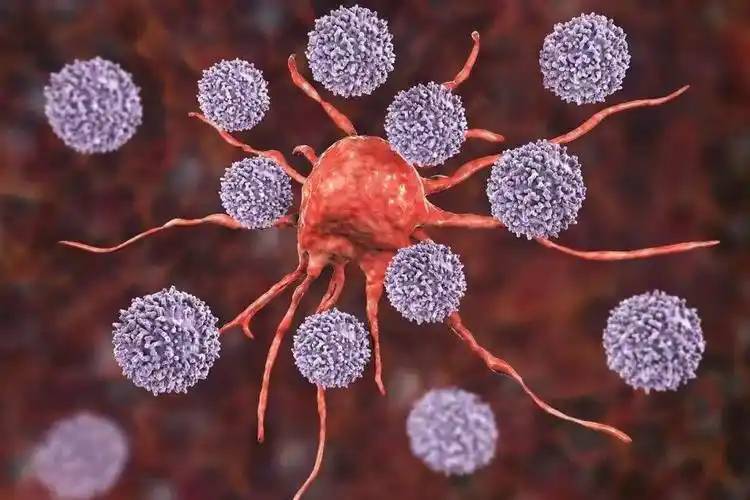
JON ° de catalogueet Al., et al.[48] reported a novel wound s’habillerbased on a mixed matrix of sodium alginate, hyaluronic acid and silver nanoparticles. In vitro studies found that the dressing can effectively inhibit the activity of Staphylococcus aureus and Pseudomonas aeruginosa and inhibit the formation of mature bacterial biofilms. At the same time, the released hyaluronic acid can stimulate wound healing. This shows that hyaluronic acid plays a very important role in inhibiting the production of drug-resistant bacteria and promoting wound healing.
Étudier la relation entrehyaluronic acid concentration and the effect of drug sustained release, Marinelli et Al., et al.[49] studied the effect of different ratios of hyaluronic acid in drug-loaded gels on antibacterial properties and viscoelastic properties. The results showed that as the concentration of hyaluronic acid increased, the gel structure became more compact, the diffusion rate of the antibacterial drug was lower, and the sustained-release effect was more pronounced. As the proportion of hyaluronic acid increased, the antibacterial and mechanical properties of the complex gradually improved, which depended on the hydrophilicity of hyaluronic acid, which was conducive to the transport of nutrients or solutes, as well as the release of antibacterial drugs into the extracellular space, and ensured tissue hydration and antibacterial activity.
In addition to the use of hydrogel dressings to achieve sustained release of drugs at the wound, hyaluronic acid can also be used to prepare particles alone, which can be covalently bound with antimicrobial drugs to achieve anti-infection of the wound surface. For example, Zhang et Al., et al.[50] prepared hyaluronic acid particles with adjustable antimicrobial drug loading by La combinaisonchemical bonding and physical adsorption. These hyaluronic acid particles can directly interact with the corneal anterior mucin layer, so that the drug-loaded particles can effectively adhere to oculairewounds, increasing the residence time of the drug in the postoperative wound, thereby achieving a long-term stable release of the antimicrobial drug.
En résumé, l’application d’acide hyaluronique sur les pansements d’une plaie dans le but de prévenir l’infection aide à absorber les exsudats de la plaie et à maintenir l’intégrité mécanique de la surface de la plaie. Il contribue également à augmenter le temps de rétention des médicaments antimicrobiens sur la surface de la plaie, à réduire la perte de médicaments, à réduire l’incidence de la résistance aux médicaments et à améliorer la biodisponibilité.
2.3 acide hyaluronique — un vecteur pour le transport de médicaments antimicrobiens dans le corps
According to the way hyaluronic acid carries antimicrobial drugs, there are currently two main types of in vivo antimicrobial drug carriers based on hyaluronic acid. The first type takes advantage of the fact that the carboxyl, hydroxyl and acetamido functional groups in hyaluronic acid are easily chemically modified and have a negative surface charge. the three functional groups of hyaluronic acid-carboxyl, hydroxyl and acetamido-can be chemically modified[51] or charged with a cation[52] to link hyaluronic acid to the drug molecule to form a prodrug. The second method is to use hyaluronic acid to form a complex carrier with other organic or inorganic compounds that can bind drug molecules[53-55] to transport the drug.
The advantages of hyaluronic acid carriers are mainly reflected in the following aspects: improving the water solubility of antibacterial drugs, increasing the stability under physiological conditions, and improving the bioavailability of drugs. Sharma et Al., et al.[56] chemically bonded hyaluronic acid to curcumin, utilising the high hydrophilicity of hyaluronic acid, which improved the poor water solubility De curcumineand the limited efficacy of conventional antibacterial drug delivery. Gamarra et Al., et al.[52] coupled the brominated alkyltrimethylammonium quaternary phosphonium salt surfactant to hyaluronic acid to form an ionic complex with a comb-like stable structure, which exhibited good antibacterial properties. Liu et Al., et al.[54] introduced hyaluronic acid to improve the aggregation and poor water dispersibility of vancomycin-encapsulated organometallic frameworks (zeolite imidazolate framework, ZIF-8). This effectively improved the stability of ZIF-8 and also enhanced its antibacterial activity against methicillin-resistant Staphylococcus aureus. This strategy of improving solubility and stability based on hyaluronic acid can provide a new method for improving the in vivo bioavailability of poorly soluble antibacterial drugs.
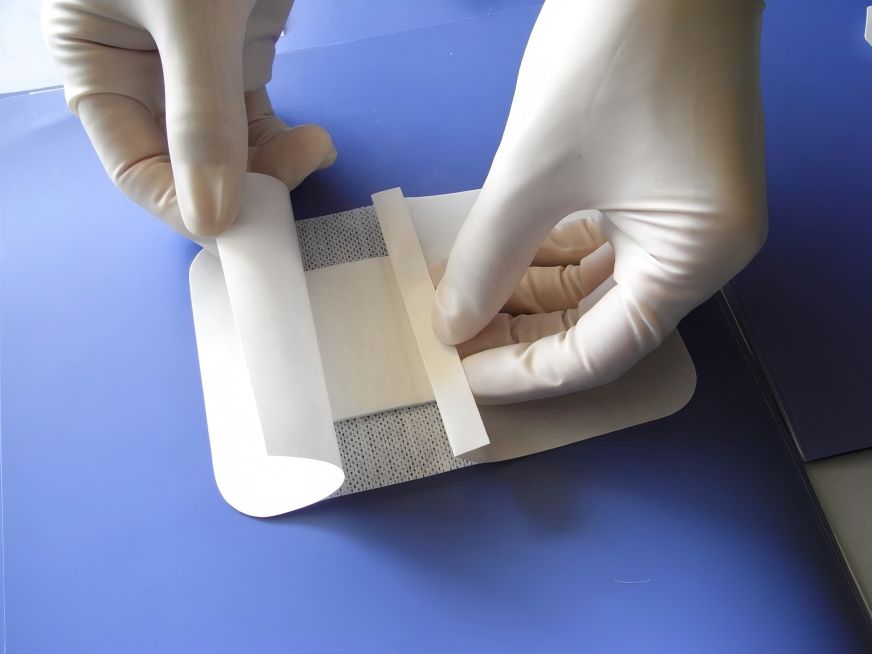
It reduces drug cytotoxicity and improves biocompatibility. For example, Yuan et Al., et al.[53] used hyaluronic acid to covalently bind cationic conjugated oligomers (oligo-thiophene ethynylene, OTE) with antimicrobial activity to form nanoparticles with OTE ends encapsulated in the core. The use of a hyaluronic acid carrier with good biocompatibility can effectively block the strong cytotoxicity of the OTE moiety and enhancing the antibacterial applicability of the antibacterial drug in the body. Kłodzińska et Al., et al.[57] prepared a kind of octenyl succinic anhydride-modified low molecular weight hyaluronic acid (OSA-HA) nanogel as a transport carrier for azithromycin. Compared with unmodified azithromycin, OSA-HA peut réduire de manière significative la cytotoxicité de l’azithromycine elle-même, augmenter ses propriétés de biofilm anti-Pseudomonas aeruginosa, et améliorer l’effet de traitement des infections.
Il peut réduire les dommages causés par les médicaments antimicrobiens et améliorer et contrôler la charge de médicament. Les probiotiques intestinaux sont souvent utilisés en clinique comme inhibiteurs concurrentiels des bactéries pathogènes, mais l’administration orale de la plupart des probiotiques entraîne souvent une perte importante de leur vitalité et de leur activité biologique en raison de l’environnement riche en acide et en sel biliaire dans le tractus gastro-intestinAl., et al.Xiao Yao et Al., et al.[58] ont utilisé un hydrogel d’acide hyaluronique autorétrécissant pour encapsuler Lactobacillus rhamnosus. Cet hydrogel protège non seulement les probiotiques de l’érosion des fluides gastro-intestinaux, mais améliore également l’activité des probiotiques dans le tractus gastro-intestinAl., et al.Il peut également atteindre la libération ciblée de probiotiques dans l’intestin, améliorant l’efficacité de salmonella entérite. D’autres études ont révélé qu’en utilisant une combinaison de couplage chimique et d’adsorption physique, la ciprofloxacine peut être encapsulée dans des particules Matériaux compositesd’acide hyaluronique transparent, ce qui peut augmenter la charge de médicament de la ciprofloxacine de près de 6,5 fois. Des tests bactériostatiques ont montré que le composite a tendance à augmenter progressivement son effet bactériostatique sur Escherichia coli, Pseudomonas aeruginosa et Bacillus subtilis au fil du temps [59].
L’augmentation de la concentration locale du médicament réduit les effets indésirables systémiques. En raison de la faible perméabilité des médicaments antimicrobiens à travers la membrane cellulaire des cellules eucaryotes, la concentration active dans les cellules est limitée. Le traitement des infections intracellulaires implique généralement d’augmenter l’efficacité en prolongeant la durée d’utilisation du médicament antimicrobien et en augmentant la dose du médicament. Cependant, non seulement ces méthodes augmentent considérablement les effets indésirables des médicaments antimicrobiens, mais elles mènent également à la production de bactéries résistantes aux médicaments [60].
Wang Zhaojie et Al., et al.[61] loaded amikacin onto hyaluronic acid, which can be quickly delivered into cells via various carrier proteins on the cell membrane surface, such as CD44, to increase the intracellulairedrug concentration and achieve the goal of effectively eliminating intracellular bacteria. Qiu et Al., et al.[51] also used the receptor-mediated entry of hyaluronic acid into host cells to chemically couple hyaluronic acid with streptomycin. This combination can improve the intracellular Bactéricide cideability of VERO cells and RAW264.7 cells, and exhibits less nephrotoxicity. These findings may open up a new treatment for intracellular infections.
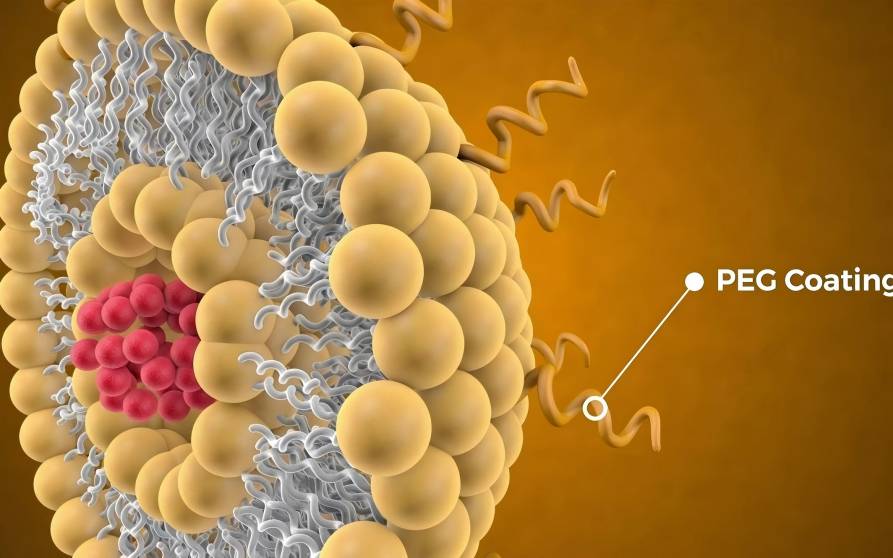
3 Conclusion et perspectives
With the wide application of hyaluronic acid in biomedicine, hyaluronic acid is also gradually showing unique advantages in antibacterial applications and has broad application prospects. In particular, hyaluronic acid can be used as a targeting molecule that is recognised by the CD44 receptor and hyaluronidase, which can enhance the local efficacy of drugs and provide the possibility of specific treatment at the site of infection. Hyaluronic acid can also be used as a sustained-release matrix and drug carrier, which is beneficial for prolonging the action time of antimicrobial drugs, Le contrôlethe use of antimicrobial drugs, reducing drug cytotoxicity, and improving drug compliance. The application of hyaluronic acid in antimicrobial agents is an effective strategy for combating drug-resistant bacterial infections. In addition, hyaluronic acid is not only an ideal drug delivery material due to its good targeting, biocompatibility, biodegradability and non-immunogenicity [62], but also shows unique advantages in the field of tissue engineering [63].
Hyaluronic acid hydrogelsused as wound Pansements pourtraumatic injuries can, on the one hand, help with the local release of antimicrobial drugs and, on the other hand, physically block the effects of external pathogens. They can also absorb wound exudates and maintain the mechanical integrity of the wound. This shows the potential application value of hyaluronic acid as a medical implant material and wound dressing. If hyaluronic acid is combined with bone-forming materials to prepare 3D Dprinted scaffolds and applied to bone defects, it is hoped that a dual effect of antibiosis and bone formation can be achieved.
However, there are still some drawbacks to using hyaluronic acid in antimicrobial agents, comme la présence d’un grand nombre d’hyaluronidases dans divers tissus et organes du corps humain. Ces hyaluronidases provoquent une dégradation rapide de l’acide hyaluronique dans le corps. La recherche actuelle est principalement basée sur la modification chimique pour améliorer le temps de circulation in vivo de l’acide hyaluronique. Cependant, le procédé de couplage chimique est compliqué et le produit est difficile à purifier, ce qui pose des difficultés pour l’application ultérieure d’acide hyaluronique aux antimicrobiens. Malgré les nombreux problèmes et défis, l’acide hyaluronique reste un matériau antimicrobien très prometteur. On pense que, dans les recherches ultérieures, la combinaison de développements dans de multiples disciplines telles que la science des matériaux, la pharmacologie, la physiologie et l’ingénierie tissulaire améliorera progressivement et favorisera une meilleure application de l’acide hyaluronique dans le domaine des antimicrobiens médicaux.
Référence:
[1]QIAO M, À propos de nous G GGGGG G, Chanteuse chanteuse A C, et al. Revue de presse De la résistance aux antibiotiques en Chine et son environnement [J]. Environ Int, 2018(110): 160-172.
[2]MA Y X, WANG WANGWANGWANG C Y, L LLl Y YYYYYYYY, et al. Considérations à considérer Et mises en garde dans la lutte contre les agents pathogènes ESKAPE contre les infections nosocomiales [J]. Adv: La science et la technologie (Weinh), En 2019, 7(1): 1901872. Doi:10.1002/advs.201901872.
[3]ZHANG ZHANGZHANGZHANGZHANGX D, WEI IIWEI D Y,XU Y, et al. Hyaluronic acid Dans l’administration oculaire de médicaments [J]. CarbohydrPolym,2021(264): 118006. Doi:10.1016/j.carbpol.2021.118006.
[4]LEE Y, SUGIHARA K, GILLILLAND N ° de catalogue G 3 °, et Al. Nanomédecine acide hyaluronique - bilirubine pour la modulation ciblée de la barrière intestinale dysrégulée, microbiome et immunitaire Les réponses in Colite [J]. Nat Mater,2020,19(1): 118-126.
[5]KIN ° de catalogueL lJ, J,J,J,J,J,J,J,J,SHIN J J JJ JJ JJ JJ JJ JJ JJ JJ JJ JJ JJ JJ JM,LEE E J, et al. Efficacité de l’acide hyaluronique et de l’amidon hydroxyéthyle dans la prévention de l’adhésion après une chirurgie endoscopique du sinus [J]. Eur Arch Otorhinolaryngol, 2017, 274(10): 3643-3649.
[6]MIGLIORE A, A,A,A,A,A,A,BLICHARSKI T, T,T,PLEBANSKI R, et al. Gestion de la douleur avec l’arthrose du genou an Haute innovatrice Et formulation d’acide hyaluronique de faible poids moléculaire (HA-HL): un randomisé clinical Procès [J]. rhumatol Et bien, 2021, 2021, 2021 8(4): 1617-1636.
[7]SEGRETO F,CAROTTI S,MARANGI G F,et al. L’utilisation du derme acellulaire porcin, de l’acide hyaluronique et des polynucléotides dans le traitement des ulcères cutanés: essai clinique randomisé en aveugle unique [J]. Int IntIntWound J, 2020, 17(6): 1702-1708.
[8]MOHAMMADPOUR RRM,KHORRAMI-NEJADM,SHAKOOR D. Rôle de la commission of artificial tears with and Sans hyaluronique acid in controlling ocular inconfort Suivant PRK: un essai clinique randomisé [J]. Int J Ophthalmol, 2021, 14(8): 1225-1230.
[9]MA W M,HUANG N ° de catalogueXIONG K Q. Constructionde surface avec des fonctions anticoagulantes et antibactériennes via une immobilisation covalente d’acide hyaluronique à haute densité [J]. Mater:Rep, 2020(8): 165-171.
[10]DONG Q Q B. Les droits de l’homme Construction d’une Injectable injectable and Hydrogel d’acide hyaluronique antibactérien basé sur la stratégie de réticulation hybride et its La prévention De CIED poche Infection [D]. Nanchang: université de Nanchang, 2021.
[11]DONG Y Q,L lL L,ZHU HUX X XX XX XR, et al. Préparation et rôle de l’hydrogel visqueux chargé de glissement dans la cicatrisation de plaies de défaut cutané de toute épaisseur avec colonisation bactérienne chez la souris [J]. Le mentonJ Burns, 2021, 37(11): 1036-1047.
[12]TIUNNIKOV G Je, KOSTINA G A, RADAEVA I F, et Al. Effets de la préparation d’acide hyaluronique sur le développement d’une infection herpétique en culture cellulaire [J]. Vopr Virusol, 2002, 47(1): 37-39.
[13]CERMELLI C, À propos de CUOGHI A, SCURI M, et al. In Évaluation vitro of antiviral and Virucide dal activity of a high molecular weight hyaluronic Acide [J]. Le Virol J, 2011(8): 141. Doi: 10.1186/1743-422X-8-141
[14]ARDIZZONI A, NEGLIA R G, «BASCHIERI» N ° de catalogue C, et Al. Influence de l’acide hyaluronique sur les bactéries et les champignons Espèces, y compris clinically relevant opportuniste Agents pathogènes [J]. J Mater La science et la technologieMater Med, 2011, 22(10): 2329-2338.
[15]ZHOU L, HAO Q, SUGITA: S, et al. Rôle de la commission of CD44 En augmentant la puissance des vésicules extracellulaires de cellules souches mésenchymateuses par l’acide hyaluronique dans la pneumonie grave [J]. Stem Cell frTher, 2021, 12(1): 293. Doi: 10.1186/s13287-021-02329-2.
[16]LEBAUDY E, E,E, FOURNEL S, La salle de bains P, et al. Progrès récents dans la conception de matériaux antiinflammatoires [J]. Adv Healthc Mater, 2021, 10(1): e2001373. Doi: 10.1002/adhm.202001373.
[17]LEE J H, LIU LIULIULIU A, Le parc J H, et al. thérapeutique effects De l’acide hyaluronique dans la Sepsis induite par les péritonites chez la souris [J]. Shock, 2020, 54(4): 488-497.
[18] larra
[19] roméo C L, DE/en Les VECCHI E, BORTOLIN M, et Al. Acide hyaluronique and its Composites comme a Barrière antimicrobienne/antiadhésive locale [J]. J os Jt Infecter, 2017, 2(1): 63-72.
[20]MARCUZZO A V, TOFANELL lM,BOSCOLO NATA F,et al. Hyaluronate effect on bacterial biofilm in ENT ENT District infections: A review[J]. APMIS,2017, 125(9): 763-772.
[21]CARLSON G A, Le dragon J L, SAMIMI: B, et Al. Bactériostatique properties of biomatrices against Orthopédie commune Agents pathogènes [J]. Accueil» Biochem Les Biophys Res Commun, 2004, 321(2): 472-478.
[22]LEI X,ZHANG R, HUANG Z ZZZX et al. Progrès de la recherche sur les hyaluronidases[J]. J Microbiol La Chine, 2021, 48(3): 882-895.
[23]TIWARI S, BAHADUR P. 1 et 2. modifié hyaluronic Matériaux à base d’acide pour applications biomédicales [J]. Int J Biol Macromol, 2019(121): 556-571.
[24]MAKVANDI P, ASHRAFIZADEH M, ngomi M, et Al. Injectable hyaluronic acid-based antibacterial Hydrogel orné with biogéniquement synthétisé Nanotubes de carbone à parois multiples décorés par agnps [J]. Prog Biomater, 2021, 10(1): 77-89.
[25]LU C B, À propos de nous Y, LIU Y Y, et al. Hyaluronic Lévofloxacine à base d’acide nanomicelles for nitrique Déclenché par l’oxyde drug delivery to treat bacterial Infections [J]. Carbohydr Polym, 2020(229): 115479. [26]ARSHAD R, TABISH TA, KIANI M H,et al. L’invention concerne un système d’administration de médicament auto-nano-émulsifiant fonctionnalisé à l’acide hyaluronique (SNEDDS) destiné à améliorer l’administration ciblée par ciprofloxacine contre une infection intracellulaire [J]. Nanomaterials(bâle), 2021, 11(5): 1086. Doi: 10.3390/nano11051086.
[27]JIANG T, XIE Z, WU F, et al. Les films composites à nanoparticules d’acide hyaluronique confèrent des biofonctions dépendantes du temps favorables pour la cicatrisation de plaies vasculaires [J]. ACL lBiomater Sci Eng, En 2019,5(4): 1833-1848.
[28] Fu Qiang, Wang Aifu, Chen Yanfeng, et al. Progrès de la recherche du gène CD44 dans le processus d’infection bactérienne [J]. China Animal Husbandry and Breeding, 2016, 12(6): 32-33.
[29] melé C M, CARDOSO (ppe). — (es) Monsieur le président, chers collègues, J F, PERASSOLI F B, et Al. Nanoparticules d’eudragit RL100 chargées d’amphotéricine b revêtues de hyaluronic acid for the treatment of Candidose vulvovaginale [J]. Carbohydr Polym, 2020(230): 115608. Doi: 10.1016/j.carbpol.2019.115608.
[30] l Y J, À propos de GAO Z G, ZHANG Y, et al. mof-blindé Et glucose-responsive ultrasmall silver nano-usine Pour une thérapie anticancéreuse et antibactérienne hautement efficace [J]. Chem fr J, 2021(416): 127610. Doi: Doi.org/10.1016/j.cej.2020. 127610.
[31]JORDAN A R, RACINE R R, HENNIG M J P,et al. Le rôle de CD44 dans la pathophysiologie de la maladie et le traitement ciblé [J]. devant Immunol, 2015(6): 182. Doi: 10.3389/fimmu.2015. 00182.
[32]DUBASHYNSKAYA N V, RAIK S V, DUBROVSKII YA, et al. Hyaluronan/ colisée polyélectrolyte Complexes: prometteurs antiinfectieux drug delivery Systèmes [J]. Int J Biol Macromol, 2021(187): 157-165.
[33]LI M, LIU J J, SU J W, et al. Recherche et développement de l’hyaluronidase [J]. Food Drug, 2019(4): 336-336, I0004.
[34] t[unused_word0006] cking K S, Gr
[35]AYAZ P,XU B BJ, ZHANG X S,et al. Un pH et l’hyaluronidase bi-réactif Basé sur multicouches drug delivery system Pour résister bacterial Infection [J]. Application de la loi Le Surf Sci, 2020(527): 146806. Doi: 10.1016/j.apsusc.2020.146806
[36]LIU Y D, Mon - sun D M, ZHANG A X, et al. L’invention concerne des complexes d’inclusion composites contenant des nanosystèmes d’acide hyaluronique /chitosan pour une double libération d’enrofloxacine réactive [J]. Carbohydr Polym,2021(252): 117162. Doi: 10.1016/j.carbpol.2020.117162.
[37]YU N X, WANG X Y, QIU L, et al. Hyaluronan déclenché par les bactéries /AgNPs/ gentamicine nanocarrier for Désinfection synergique des bactéries et application de cicatrisation des plaies [J]. Chem Fr/enJ, 2020(380): 122582.
[38]RAN X,DU Y,WANG Z Z, et al. Ag hyaluronique templated à l’acide Nanoparticules/graphène oxide composites for Thérapie synergique de l’infection bactérienne [J]. ACS Application de la loiMater Interfaces, 2017, 9(23): 19717-19724.
[39]YANG Y,DONG Z G, LI M et al. Oxyde de graphène/nanodérivés de cuivre modifiés Chitosan/hyaluronique acid dressings for Faciliter la guérison des plaies chez les personnes infectées Pleine épaisseur Défauts cutanés [J]. Int J Nanomedicine, 2020(15): 8231-8247.
[40]JON A D O, emon M A, VIRGINIA S M, et al. Biocompatible hyaluronique Acide divinyle Le sulfone Injectable injectable hydrogels Pour une libération prolongée de médicament avec des propriétés antibactériennes renforcées contre Staphylococcus aureus[J]. Mat Sci Eng C, 2021(125): 112102.
[41]WANG J. : J. : J. : préparé hydrogel dressing based on hyaluronic acid for combining with cell Feuille de route and Anti-bactéries [D]. Beijing: université de technologie chimique de Beijing, 2020.
[42]ZHAI P P S, PENG. X X, LI B Q, et al. The application De l’acide hyaluronique dans la régénération osseuse [J]. Int J Biol Macromol, 2020(151): 1224-1239.
[43]YANG L L, ZHANG L T, HU J, et al. promouvoir Anti-inflammatoire et angiogenèse utilisant un hydrogel à base d’acide hyaluronique contenant des nanoparticules chargées de mirna pour le traitement de plaies diabétiques chroniques [J]. Int J Biol Macromol, 2021(166): 166-178.
[44] en savoir plus M F P, MIGUEL S P, CABRAL C S D, et Al. Hyaluronique À base d’acide wound Pansements: A Revue [J]. Carbohydr Polym, 2020(241): 116364. Doi: 10.1016/j.carbpol. 2020.116364.
[45]TU Y Y, LI L H,ZHAO auX Y, et al. Fermentation production de microbiens polysaccharides and Il est application in Pansements de plaies [J]. Le menton J Mod Mod Appl Pharm, 2021(17): 2185-2192.
[46] cortés H, Caballero-florent. m I H, MENDOZA- muemon emon oz N, et al. Acide hyaluronique dans les pansements de plaies [J]. Cellule Mol Biol: Noisy-Le-Grand, 2020, 66(4): 191-198.
[47]ZHU J, LI F X, WANG X L, et al. Hyaluronic acid Et polyéthylène glycol hybride hydrogel encapsulation Nanogel avec hémostase and durable antibacterial La propriété Pour la guérison des plaies [J]. Interfaces ACS Appl Mater, 2018, 10(16): 13304-13316.
[48]TARUSHA L, PAOLETTI S, TRAVAN: A, et al. Membranes Alginate loaded with hyaluronic acid and Nanoparticules d’argent pour favoriser la guérison des tissus et contrôler la contamination bactérienne De blessures non cicatrisantes [J]. J Mater Sci Mater Med, 2018, 29(3): 22.
[49]MARINELLI L,CACCIATORE I,EUSEPI P, et Al. Viscoélastique Comportement de formulations d’acide hyaluronique contenant des promédicaments au carvacrol avec des propriétés antibactériennes [J]. Int J Pharm, 2020(582): 119306. Doi: 10.1016/j.ijpharm.2020. 119306.
[50]ZHANG Z, Mon - sunS S, BLAKE D A, et al. Activité antimicrobienne and biocompatibility of Libération lente Particules conjuguées acide hyaluronique et antibiotique [J]. Int J Pharm, 2020(576): 119024. Doi: 10.1016/j.ijpharm.2020.119024.
[51]QIU Y H, HOU ouou Y L, Le soleil F F, et al. Hyaluronic Conjugaison acide facilite dédouanement of intracellular Infections bactériennes par streptomycine avec néphrotoxicité négligable [J]. Glycobiology, 2017, 27(9): 861-867.
[52]GAMARRA A, FORÉS E, morat[unused_word0006] J, et Al. Complexes ioniques amphiphiles d’acide hyaluronique avec des composés organophosphonium and their antimicrobial Activité [J]. Int J Biol Macromol, 2018, 118(Pt B): 2021-2031.
[53]YUAN Q, ZHAO Y T, ZHANG Z Q, et al. Antimicrobien à la demande agent release from fonctionnalisé Oligomer-hyaluronique conjugué Nanoparticules acides pour lutter contre la résistance aux antimicrobiens [J]. ACS Appl Mater Interfaces, 2021, 13(1): 257-265.
[54]LIU Y Y, LI Z H, ZOU S Y, et al. ZIF-8 enduit d’acide hyaluronique pour le traitement de la pneumonie causée par résistant à la méthicilline Staphylococcus Aureus [J]. Int J Biol Macromol, 2020(155): 103-109.
[55]YANG J, ZHAO Y D, CAO CAO J, et al. Hyaluronic acid Et nanocages hybrides antimicrobiens modifiés par des peptides or/argent pour lutter contre bacterial multidrogue Résistance [J]. Int J Pharm, 2020(586): 119505. Doi: 10.1016/j.ijpharm.2020.119505.
[56]SHARMA M, SAHU K, SINGH S P, et al. Activité de guérison des plaies of curcumin Conjugué à hyaluronic Acide: dans Vitro et in vivo Évaluation [J]. Article 1 cellules À propos de Nanomed Biotechnol, 2018, 46(5): 1009-1017.
[57] k[unused_word0006] odzi[unused_word0006] ska S N, WAN WAN F, JUMAA - JUMAA H, et al. Utiliser les nanoparticules pour améliorer Effets anti-biofilm de l’azithromycine: comparaison en tête à tête de l’hyaluronique modifié acid Les nanogels and enduit Poly (acide lactico-co-glycolique) Nanoparticules [J]. J colloïde Interface Sci, 2019, 555: 595-606.
[58]XIAO Y, LU LU C B, LIU Y Y, et al. Encapsulation De Lactobacillus rhamnosus in hyaluronic acid-based Hydrogel pour l’administration ciblée par l’agent pathogène pour améliorer l’entérite [J]. C c Appl Mater Interfaces, 2020, 12(33): 36967-36977.
[59]SAHINER N, SUNER S S, AYYALA R S., S., S. La préparation of hyaluronic acid and copolymère hyaluronic Acide: Particules de saccharose en tant que supports antibiotiques accordables [J]. J Polym Res, 2020, 27(7): 1-12.
[60]LIU C X. Défis à relever and La pensée of current Développement d’antibiotiques [J]. Le menton J Antibiotique, 2017, 42(1): 1-12.
[61]WANG Z J, QIU Y H, HOU C Y, et al. synthèse De hyaluronan-amikacine conjugué and its bactericidal Activité contre les bactéries intracellulaires in vitro et in vivo[J]. Carbohydr Polym, 2018(181): 132-140.
[62]CHEN F, YANG Y, ZHANG L, et al. Progrès de la recherche sur l’administration de nanomédicaments à base d’acide hyaluronique Systèmes dans le traitement ciblé du cancer [J]. Chin J Mod Appl Pharm, 2019(13): 1704-1710.
[63]LIU H, LIU A F, ZHANG Y et al. Avantages et stratégies d’application of hyaluronic acid échafaudage in Le cartilage Ingénierie de réparation [J]. Chin J Le Tiss Eng Rés, 2022, 26(34): 5518-5524.
-
Précédent précédent
Quelle est l’utilisation de l’acide hyaluronique dans les produits de soins buccodentaires?
-
Suivant:
L’acide hyaluronique est bon pour les produits de soins de la peau


 Anglais
Anglais français
français espagnol
espagnol russe
russe coréen
coréen japonais
japonais




